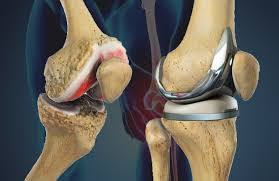
Physical Therapy and Exercise for Sciatica: The Natural Pain Management Solution
If you've ever suffered from sciatica, you're probably well aware of how incapacitating the condition can be. When you have pain that travels up your thigh and down your leg, it can be difficult to stand, sit, or even lie down without experiencing discomfort. Taking medication may help manage the pain, but it will only provide temporary relief from it. On the other hand, physical therapy and exercise offer a form of pain management that is based on natural methods and can assist you in finding long-term relief from the symptoms you are experiencing. In this section of our website, we will cover the benefits of undergoing physiotherapy for sciatica, as well as the exercises that have proven to be the most successful in treating the condition.
Can Physiotherapy Help Sciatica?
Physiotherapy can indeed assist in the management of sciatica by lowering levels of pain and inflammation, enhancing levels of flexibility and mobility, and working to strengthen the muscles that support the spine. Exercise, manual therapy, and educational sessions are often included in the treatment plan for sciatica provided by physiotherapists. These sessions are designed to help you gain a better understanding of your disease and how to best manage it.
Physiotherapists are also able to uncover any underlying issues that may be contributing to your sciatica. Some of these concerns include poor posture and weak muscles. Physiotherapy can assist prevent recurrences of sciatica by focusing on the aforementioned difficulties and finding solutions to them.
What Are the 2 Best Exercises for Sciatica?
When it comes to exercises for sciatica, two key types of exercises can be particularly effective. The first type is stretching exercises, which can help to alleviate the pressure on the sciatic nerve and reduce pain. Examples of stretching exercises include hamstring stretches, piriformis stretches, and lumbar stretches. The second type of exercise is strengthening exercises, which can help to improve the stability and support of the muscles in the lower back and legs. Examples of strengthening exercises include glute bridges, wall sits, and squats. However, it's important to note that not all exercises are suitable for everyone with sciatica, and it's important to work with a qualified physiotherapist to create a personalized exercise plan that meets your specific needs and limitations.
McKenzie Extension Exercises: These exercises involve lying on your stomach and lifting your chest off the ground. This position helps to extend your spine and relieve pressure on the sciatic nerve. You can also do this exercise while standing by placing your hands on your lower back and gently arching backward.
Piriformis Stretch: The piriformis muscle runs through the buttock and can compress the sciatic nerve when it is tight or inflamed. To stretch this muscle, lie on your back and cross one ankle over the opposite knee. Then, gently pull the knee toward your chest until you feel a stretch in your buttock.
These exercises should be done under the guidance of a physiotherapist to ensure proper technique and to avoid further injury.

What Physical Exercises Treat Sciatica?
In addition to the McKenzie Extension Exercises and Piriformis Stretch, several other exercises can help manage sciatica:
Hamstring Stretches: Tight hamstrings can pull on the lower back and aggravate sciatica. To stretch your hamstrings, sit on the edge of a chair and extend one leg in front of you. Then, lean forward until you feel a stretch in the back of your leg.
Cat-Cow Stretch: This yoga pose involves alternating between arching your back (the cow) and rounding your spine (the cat). It can help improve spinal flexibility and reduce pain.
Wall Sits: This exercise strengthens the muscles in the legs and core that support the spine. To do a wall sit, stand with your back against a wall and slowly slide down until your knees are bent at a 90-degree angle. Hold this position for as long as you can.
Again, it is important to do these exercises under the guidance of a physiotherapist to avoid further injury.
How Long Does Physiotherapy Take for Sciatica?
The length of physiotherapy for sciatica will depend on the severity of your condition and how quickly you respond to treatment. In general, you can expect to attend physiotherapy sessions for several weeks to several months.
Your physiotherapist will work with you to develop a personalized treatment plan that may include exercises, manual therapy, and education. They will also monitor your progress and adjust your treatment plan as necessary.
In conclusion, if you suffer from sciatica, physiotherapy and exercise offer a natural pain management solution that can help you find long-term relief. By working with a physiotherapist and doing targeted exercises, you can reduce pain and inflammation, improve flexibility and mobility, and strengthen the muscles that support your spine.
Healthy Türkiye Notes
Physiotherapy for sciatica is a non-invasive and drug-free approach to managing the condition. It can help you avoid the potential side effects of pain medications and other invasive procedures, such as injections or surgery. With the right physiotherapy program, you can reduce your dependence on medications and improve your overall quality of life.
In addition to exercises and manual therapy, your physiotherapist may also use modalities such as heat or cold therapy, ultrasound, or electrical stimulation to help reduce pain and inflammation. They may also offer ergonomic and postural advice to help you avoid aggravating your sciatica.
It's important to note that physiotherapy for sciatica is not a quick fix. It requires dedication, patience, and consistent effort. However, the results can be well worth the effort. By improving your physical function and reducing pain, you can enjoy a more active and fulfilling life.
If you're considering physiotherapy for sciatica, it's important to choose a qualified and experienced physiotherapist who specializes in treating the condition. They can create a personalized treatment plan based on your specific needs and goals.
In conclusion, physiotherapy and exercise are a natural and effective way to manage sciatica pain. By working with a physiotherapist and doing targeted exercises, you can reduce pain and inflammation, improve flexibility and mobility, and strengthen the muscles that support your spine. With the right approach, you can find long-term relief and enjoy a better quality of life.



